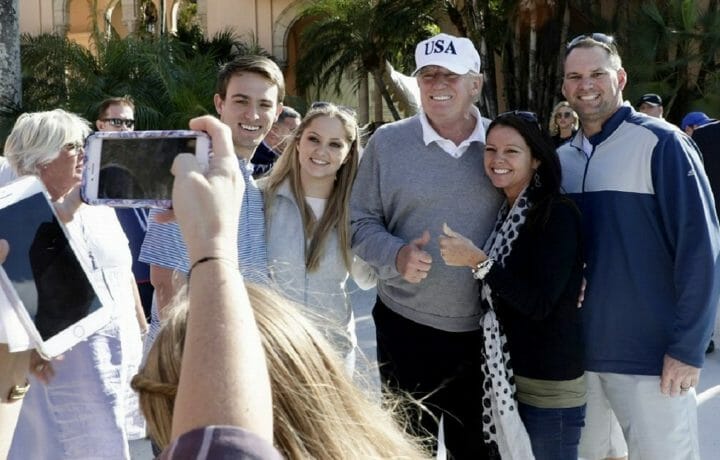The White House is the official residence and workplace for the President of the United States (POTUS), but most first families have found it confining. Whether you call it a vacation or a remote work location with a security detail, presidents have spent time in locations from Martha’s Vineyard and Kailua Bay, HI (the Obamas) to a ranch in Santa Barbara, CA (the Reagans). Presidential getaways have often come under scrutiny due to the perception that the executive office is taking a vacation. But a recent report is also calling into question their security.
On March 30 authorities arrested Chinese nationalist Yujing Zhang, who was carrying four mobile phones, a laptop and thumb drive at the Mar-a-Lago Club, a Palm Beach, FL resort frequented by the Trump family. When a Secret Service agent plugged in the thumb drive to determine its contents the drive began installing files – which may possibly be malware. Zhang remains jailed and has been denied bail.
“With the phones it was apparent she was going to copy something, leave malware or perhaps a listening device,” said Professor Cal Jillson of the political science department at Southern Methodist University
The Presidential Getaways
No matter where the president is, his staff travels with him. Even at a getaway it isn’t rest and relaxation. President George W. Bush spent approximately 500 days during his two terms at his ranch in Crawford, TX. The family ranch, which President Bush still owns, played host to Russian President Vladimir Putin and British Prime Minister Tony Blair, among other world leaders. President Ronald Reagan had his own range in California – and due to the amount of time that “The Gipper” spent there, it earned the nickname “Western White House.” President Reagan hosted Mikhail Gorbachev and Great Britain’s Queen Elizabeth II at the ranch.
President John F. Kennedy actually had grand plans for presidential getaways and built a modest ranch in Hyannis Port, MA. However, the family only spent three weekends there before President Kennedy was assassinated in 1963. His successor, President Lyndon B. Johnson spent a reported 20% of his time in office at his ranch that was located outside of Austin, TX. It earned the nickname the “Texas White House.”
The question is how secure were these – and other residences – compared to the White House?
In the case of the various ranches these were all fairly isolated – and that comes with its own security benefits.
“This allows the Secret Service to provide a perimeter,” said Jillson. “The same sort of perimeter was created when President Obama would visit Hawaii, but the Obamas like to walk the beach so that presented some problems.”
Because the various ranches were owned by the respective president, the Secret Service could set up a semi-permanent operations center, as well – something not done when the president opts to vacation at a resort locations.
“Anytime the president is away from a government facility – namely the White House or Camp David – there have to be protocols to ensure that it is secure,” explained Jillson. “But in the White House, which is really a semi-public building, the important part is that the Secret Service is in charge. They make the rules, they establish the protocols. Those agents are subject to a security clearance and professional background check, but increasingly this isn’t the case with the staff at some of these other facilities.”
This is where Mar-a-Lago has presented some challenges for the Secret Service. It is a restricted club, but it still has paying members who expect not to have their visits too disrupted.
“That has become an issue, as the club staff at Mar-a-Lago shares some responsibility with the Secret Service,” added Jillson. “If you are the Secret Service agent in charge you now have to share responsibility with the desk clerk and that probably doesn’t seem right to you.”
Jillson noted that there is water traffic near the bay, as well as street traffic. “All of it is monitored, but it can’t be secured in a way that would make the Secret Service comfortable.”
The final consideration with any facility is that today, devices from smart TVs to so-called virtual assistant smart speakers have been found to be capable of monitoring users. This presents its own challenges for the Secret Service. It isn’t just about protecting the president from physical harm, but about ensuring the security of every device in and around the president.
At any facility that isn’t tightly controlled there is a potential threat, warns Jillson. “That is a failure to appreciate what is at stake.”




